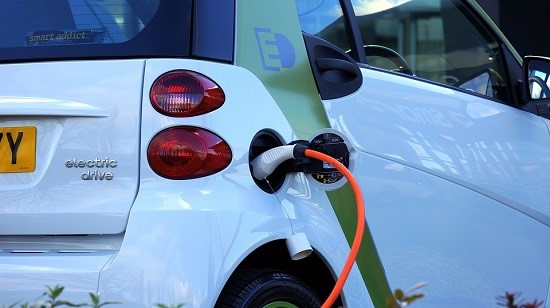The switch from fossil fuel-powered internal combustion engines is rapidly gaining momentum. Labelled “electro mobility”, this is a technology switch to drivetrains which utilise electric-powered technologies. In this article, we explore some of the challenges or obstacles which lie ahead to widespread electro mobility adoption.
Electro mobility is not just about cars!
It’s worth mentioning from the outset that electro mobility is far wider than just cars. The keywords are “electro”- powered by electricity and “mobility” – any vehicle which enables motion or movement.
All of the following are examples of electro mobility vehicles (when electrically powered) – bikes, buses, cars, drones, helicopters, hoverboards, lorries and trucks, oil tankers, planes, scooters, ships and vans.
Current obstacles to widespread electro mobility adoption
There are numerous obstacles to electro mobility adoption, we discuss some of these below.
An example of a public charging station in Malaga, Spain
1) Lack of charging infrastructure
Access to electric vehicle charging infrastructure is absolutely critical to electro mobility adoption. Areas of charging infrastructure include (but are not limited to):
- Residential charging stations – this gives the ability for the e-vehicle owner to charge their vehicle in their own residence. Charge speed is less critical here, with overnight charging a possibility. Charging points could be within a garage or attached to the outside of the property
- Fast charge public charging stations – the equivalent of modern fuel stations, these would consist of bays of electric charging points where customers can rapidly charge their electric vehicle
- Charging whilst parked stations – with e-vehicles an opportunity presents itself to charge whilst the vehicle is parked. This can be delivered in many ways, through free or chargeable car parks, as a service to employees and also to customers (e.g. at a restaurant, supermarket, gym, shopping centre, etc.)
- Battery swaps – whilst not exactly charging infrastructure another idea raised is battery swaps. This is where an owner leaves their current battery and takes a charged battery as a replacement, for a fee. This idea has merit, and will no doubt be developed further in the future.
2) Lack of charging speed
Another barrier is the lack of charging speed. The speed of charging has a direct correlation with electric vehicle ownership. The current method of fossil fuel pumps allows hundreds of miles of driving in just a few minutes.
Data from Pod Point shows, the following miles of charge per hour of use:
- 7kW charger – up to 15 miles
- 7kW charger – a maximum of 30 miles
- 22kW charger – a maximum of 90 miles
- 50kW charger – up to 180 miles
- 150kW charger – up to 200 miles per thirty minutes
Home charging points typically can only currently utilise 3.7kW or 7kW chargers. This is because of a lack of three-phase power, which is needed for the rapid chargers.

The lack of speed of electric charging is a concern for large-scale electro mobility adoption
3) New electro mobility vehicles current cost is too high
The current cost of electric vehicles tends to be much higher than fossil-fuel powered. This is a barrier in terms of capital outlay, which is repaid by much lower mechanical and fuel costs.
Possible solutions to reduce the cost outlay of e-vehicles are manufacturer subsidies and government grants.
4) Reliance on electricity
Although not as much of a problem in the western world, reliance on electricity is an issue in some developing countries. National power grid systems need to be developed to ensure that electric supplies are capable of meeting the demands of electric vehicle owners.
5) Access to raw materials
With analysts predicting up to 340 million electric vehicles to be manufactured between now and 2030 there will be a massive demand for certain raw materials. A recent report from McKinsey, showed the following materials, which are all used in battery production, are likely to cause constraint issues:
- Cobalt
- Lithium and
- Nickel
Currently, scientists are exploring alternative materials, which could be used as well as reducing the amounts of these materials being used. In addition, governments are trying to put recycling schemes in place, especially for electric battery recycling.

Lithium-ion batteries will cause a mass demand for some constrained materials
6) Legislation
In some cases, legislation could help to encourage electric vehicle adoption. Examples include electro mobility grants, tax advantages to electro mobility providers, tax charges for fossil fuels and various other legislation which encourages electro mobility adoption.
7) Mass production
Manufacturers are gearing themselves up for mass production of electric models. This is something, which will take time and manufacturers will divert effort from fossil fuel vehicle production to electro vehicle production.
This is a “chicken and egg” scenario as manufacturers can’t mass produce until the vehicles are mass sold. This means many of the obstacles in this article need to be resolved first, obstacles such as access to charging infrastructure, improvements to charging speed and plentiful access to raw materials in particular need to be fixed.
Certain new technologies such as fiber lasers will also help in electro mobility mass production. Fiber lasers can help in many areas such as rapid prototyping and electric battery production.
8) Selling second hand e-vehicles
Currently, there is a real challenge in the selling of electro vehicles in the second hand market. The problem is that because of the massive technology strides (e.g. charging speed) which are being achieved by manufacturers, vehicles are often technology obsolete within 2-3 years.
This accompanied with natural depreciation and “wear and tear” means the value of second hand e-vehicles is very low compared to the initial outlay. To get the “latest technology” many owners are opting to buy new vehicles (some which may also have grants and subsidies), which also reduces the value of second hand models as a glut becomes available on the market.
This problem should begin to reduce as the market matures and technological change becomes less.
9) Distrust and lack of knowledge for electro mobility technologies
There is still a general lack of knowledge of electro mobility technologies within society. This fuels distrust as people often don’t trust what they don’t understand!
Governments, manufacturers and other interested parties need to continue their public awareness campaign to improve public knowledge of electro mobility. This should include TV advertising and programmes in particular.
Electro mobility can proceed with cautious optimism
We hope you have very much enjoyed reading this article. No doubt electro mobility vehicles will continue in popularity, but these obstacles will need to be overcome first. “Where there is a will, there is a way!”.
